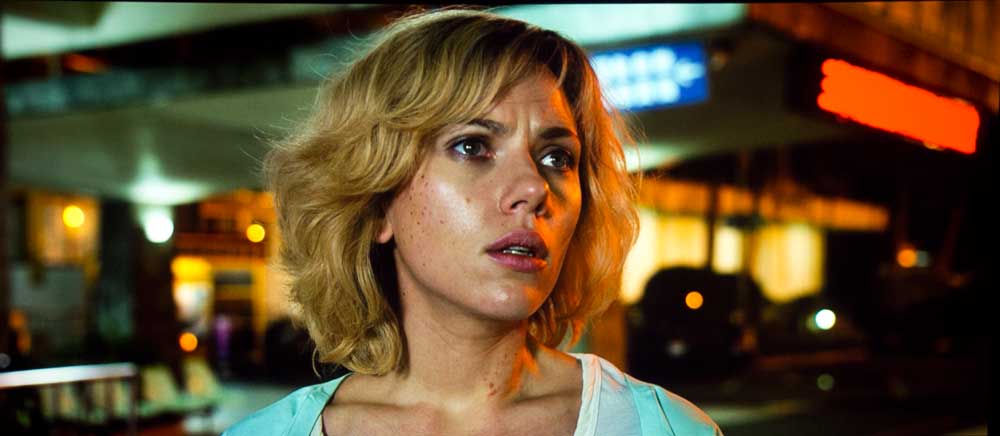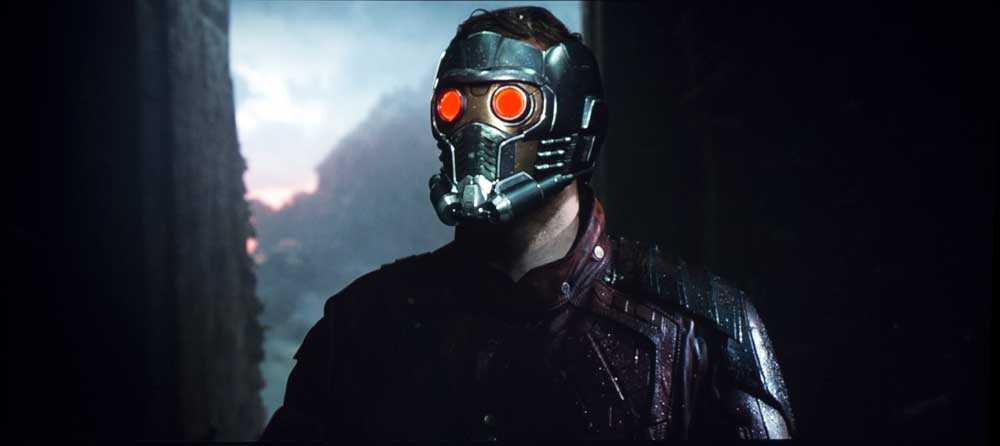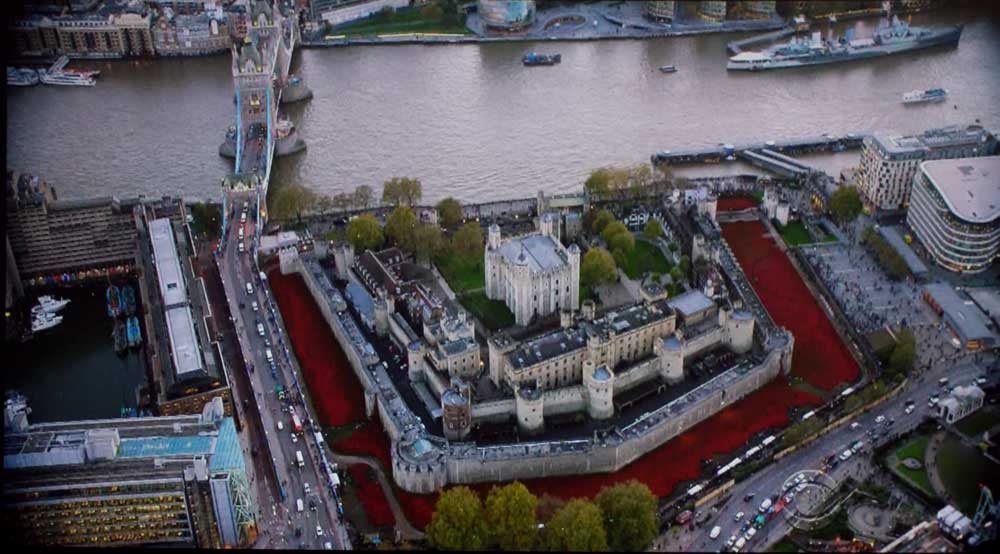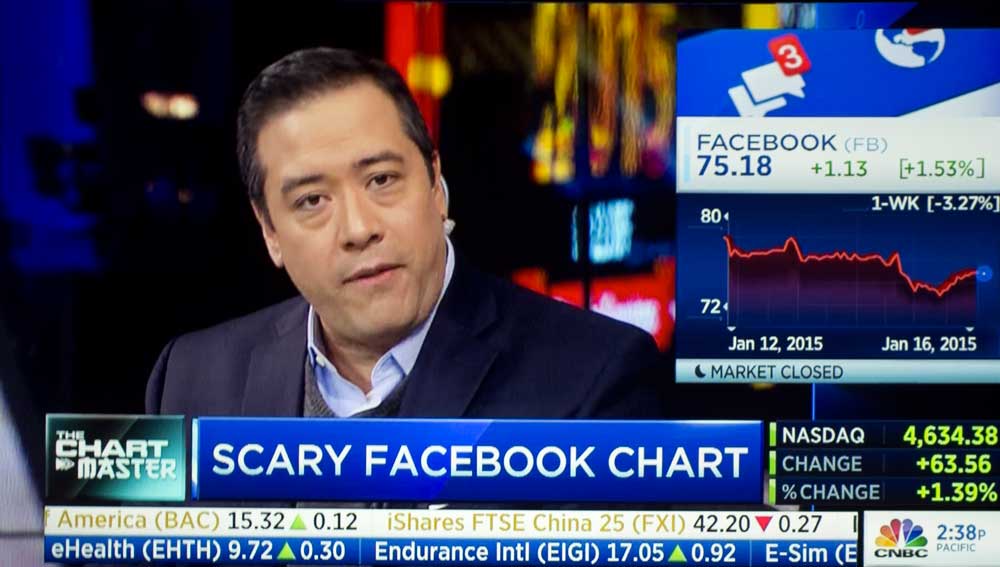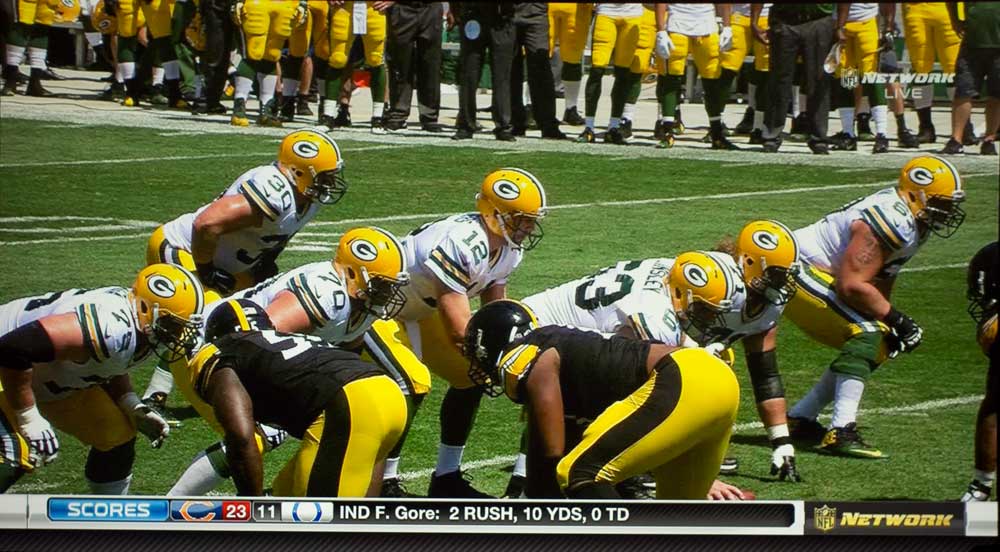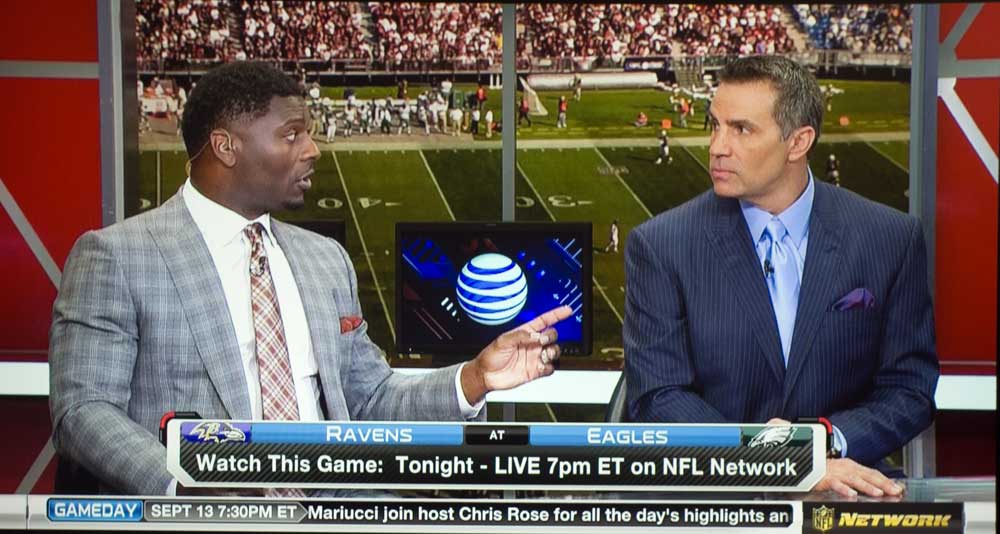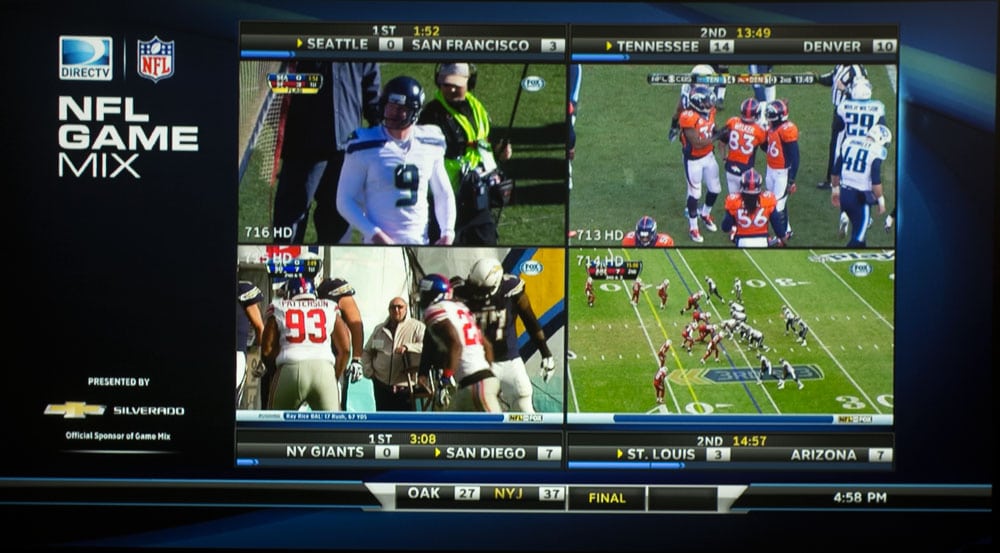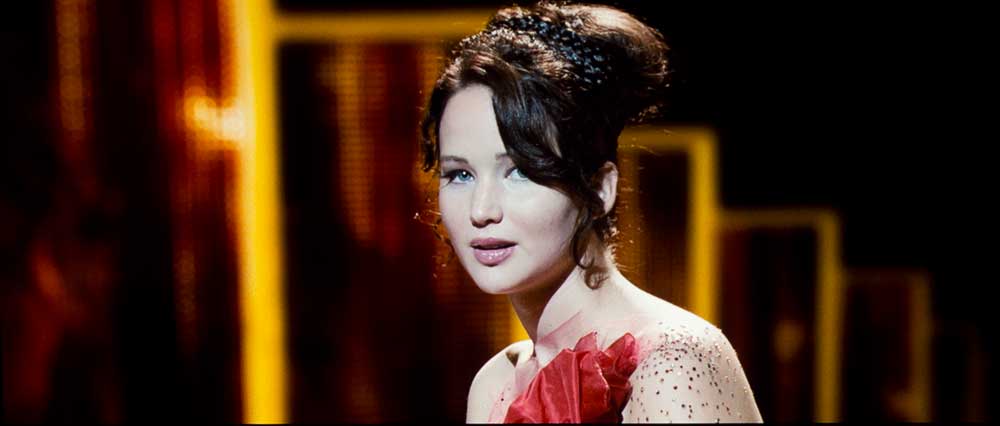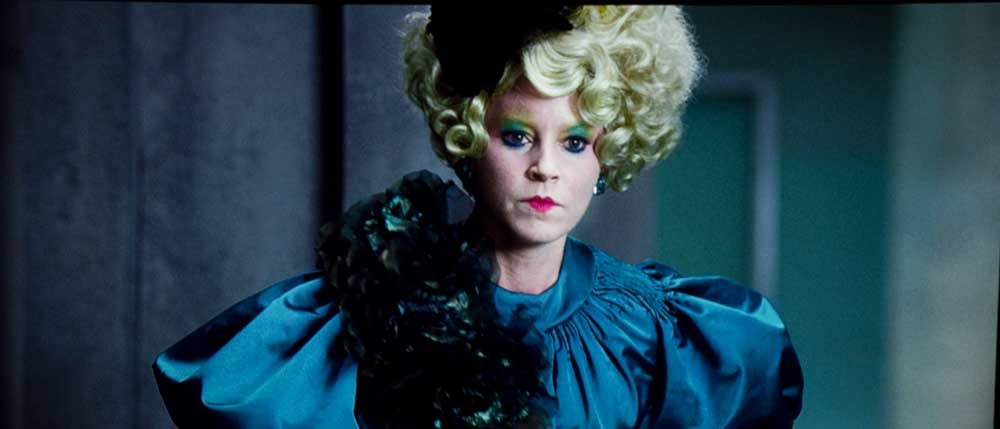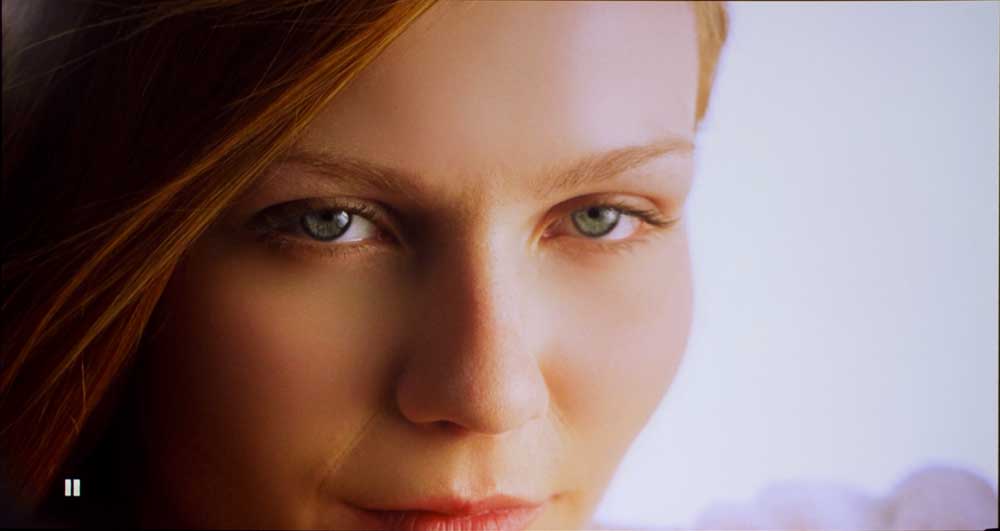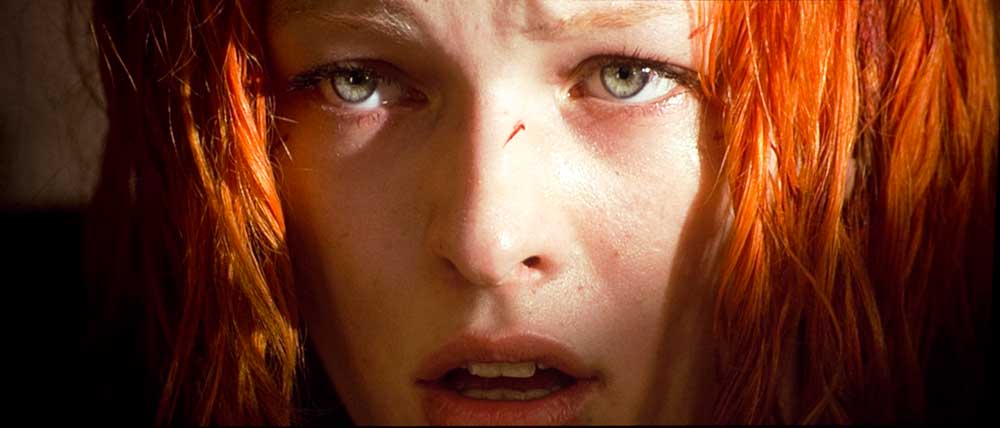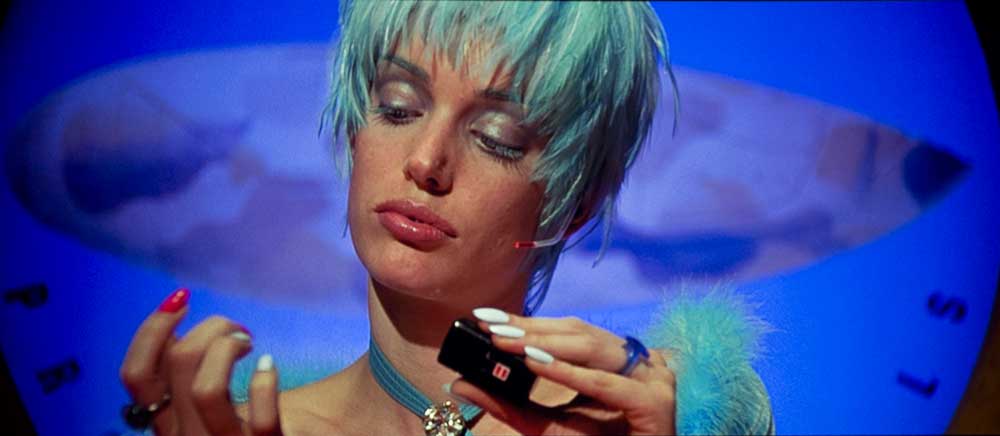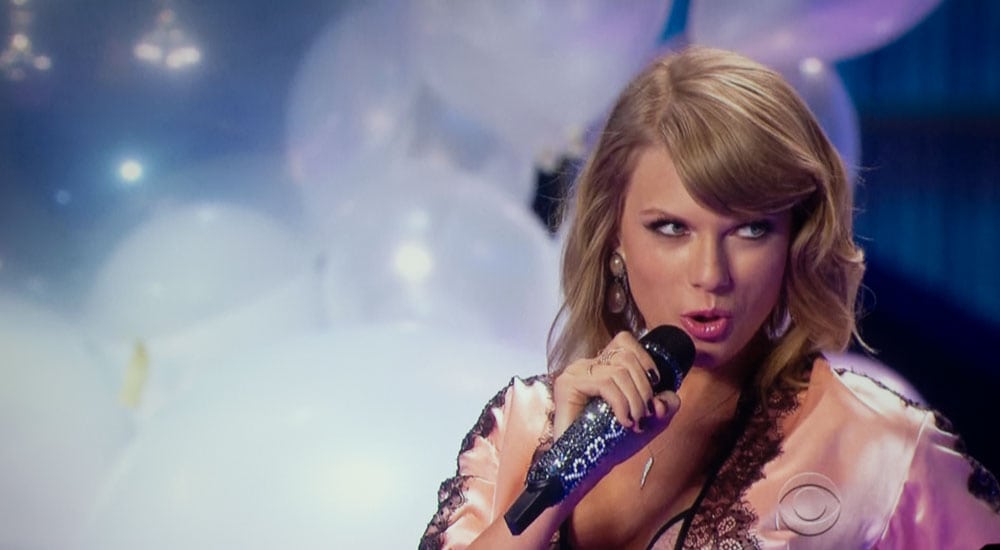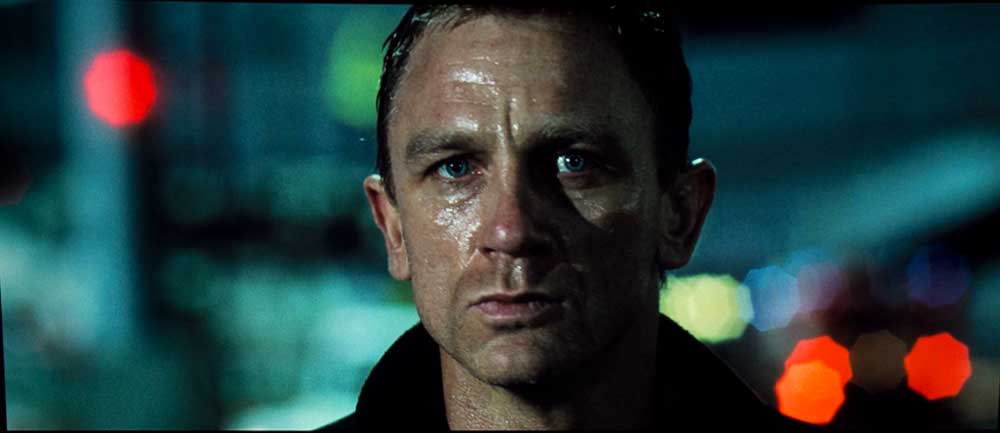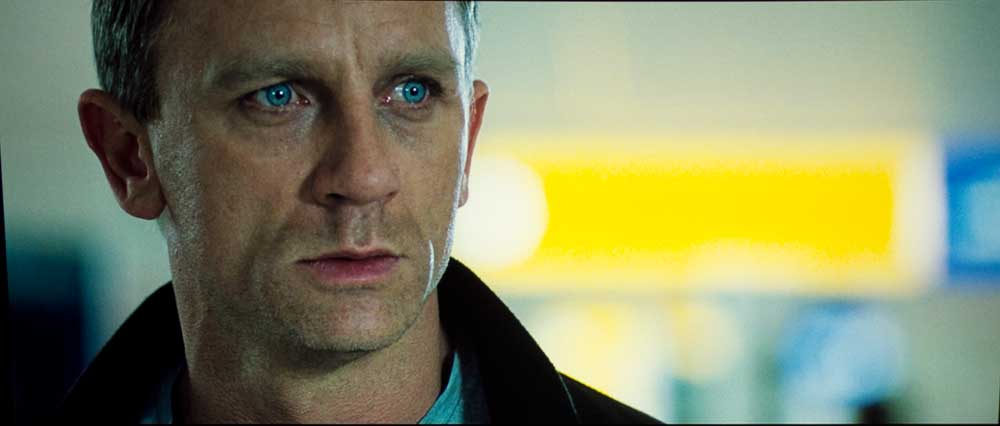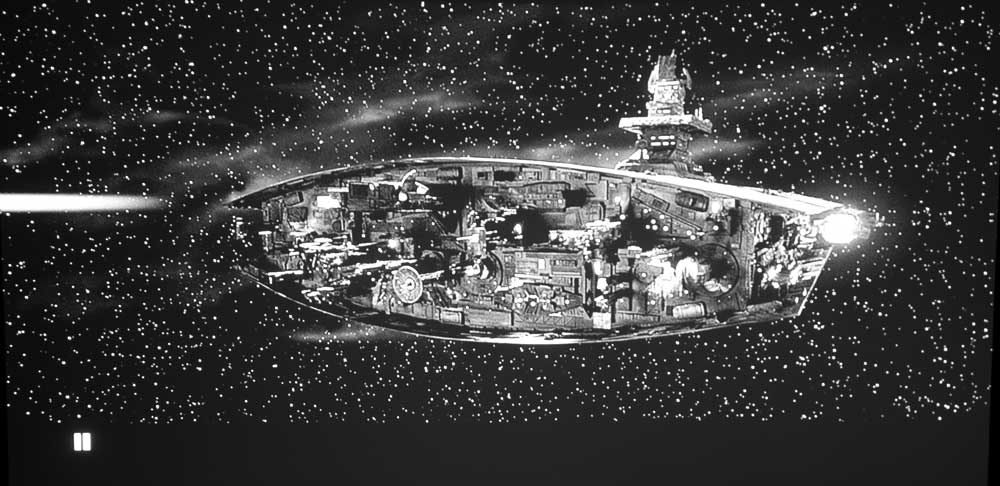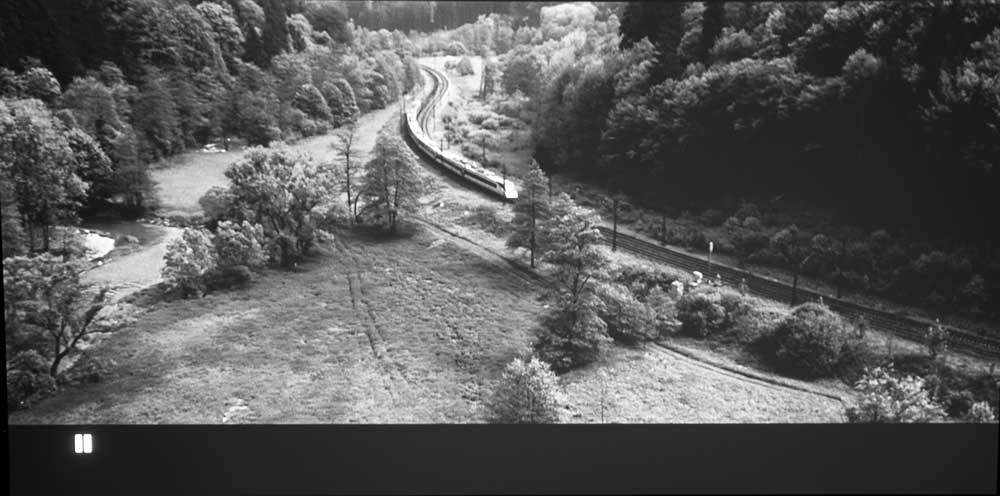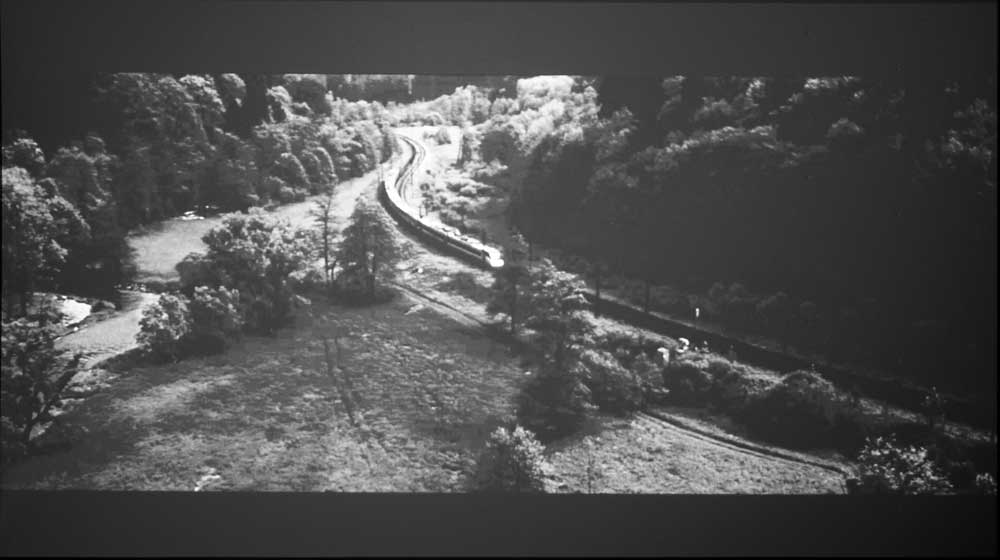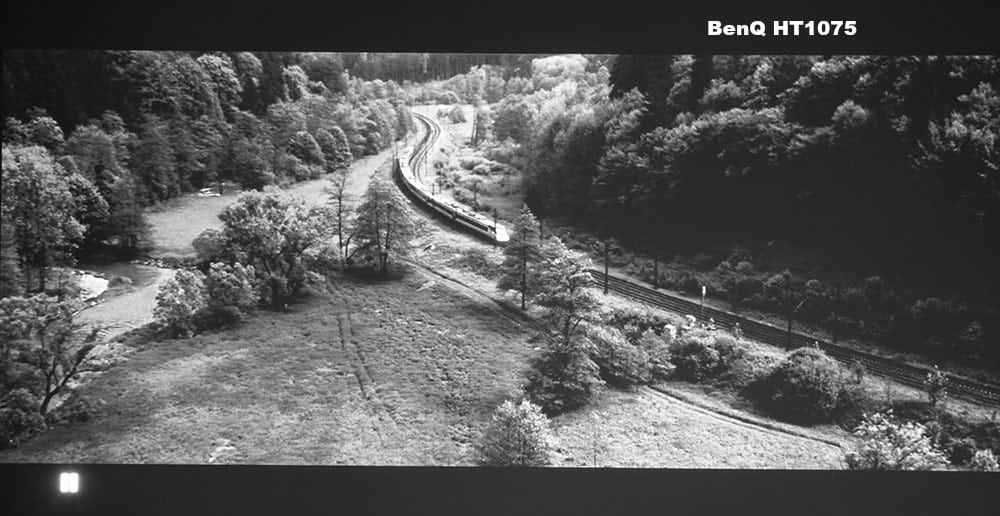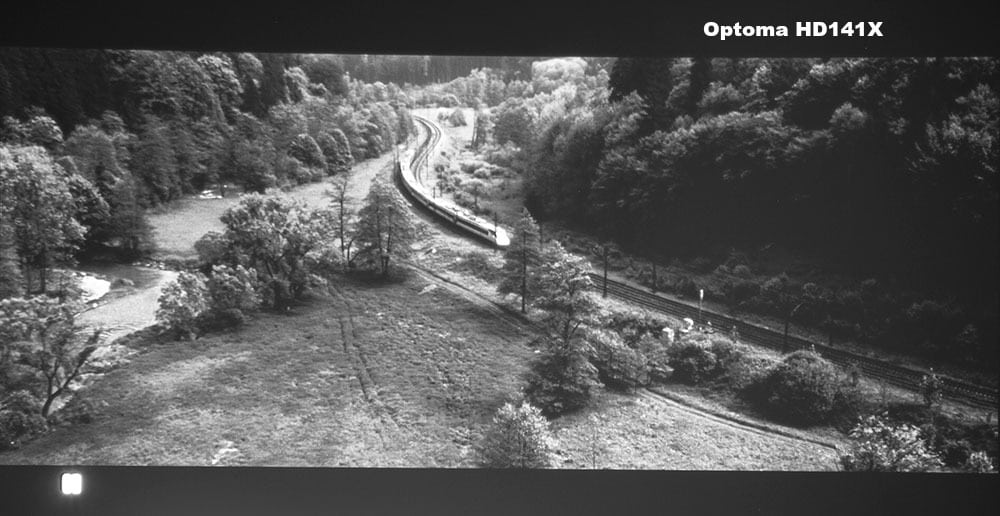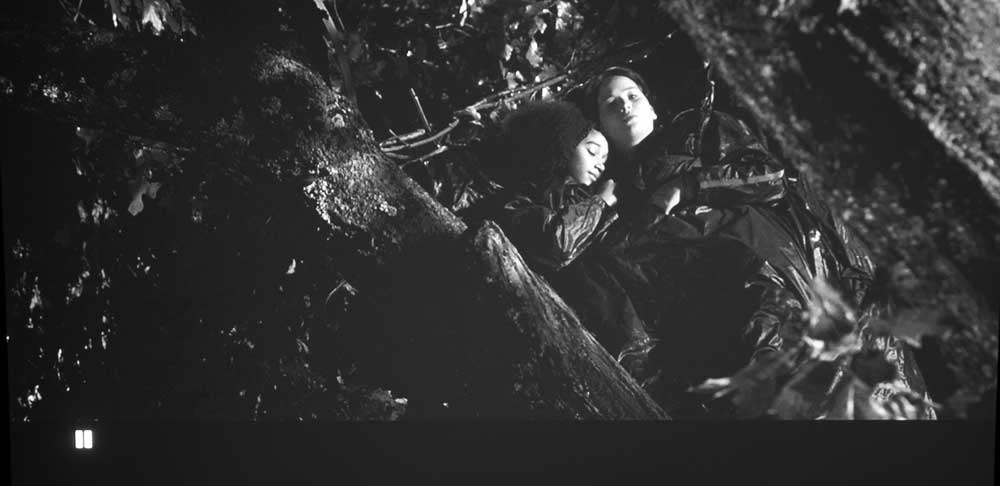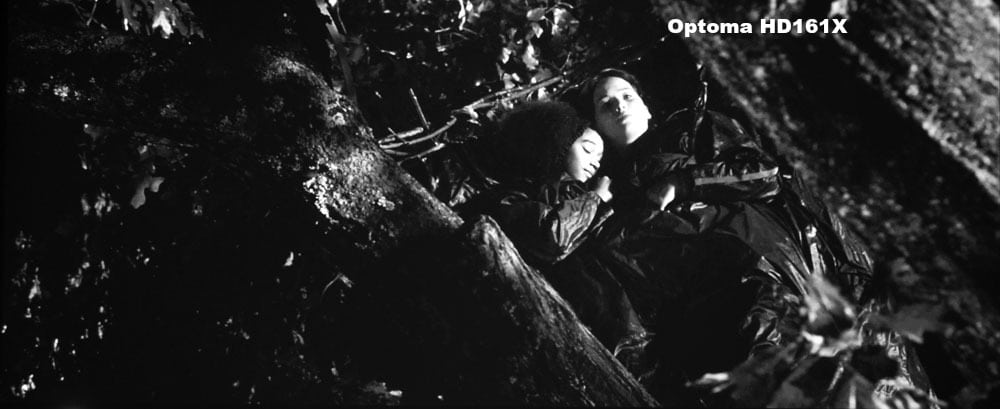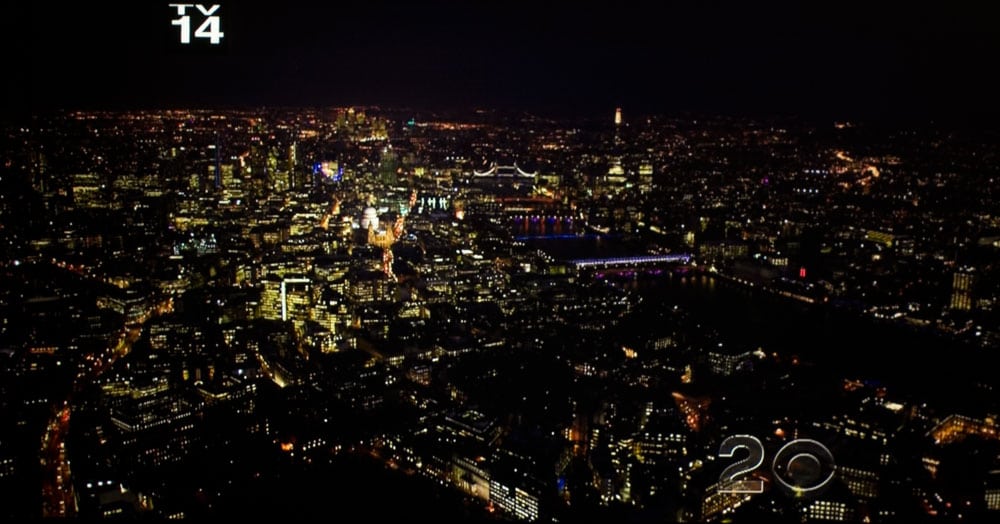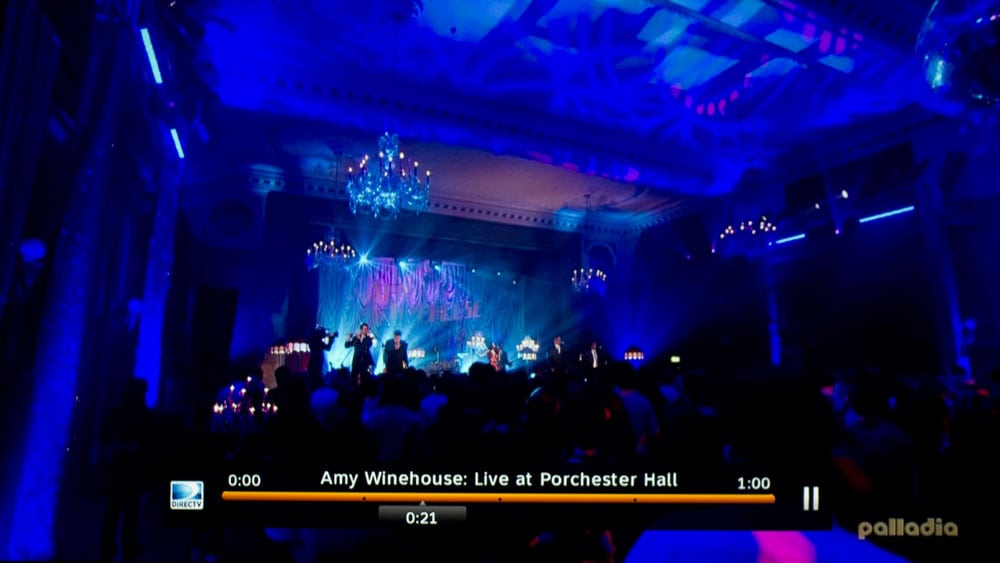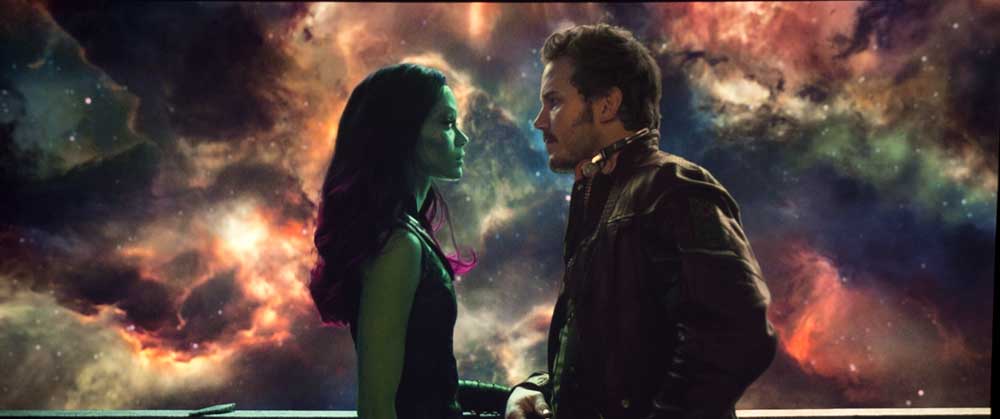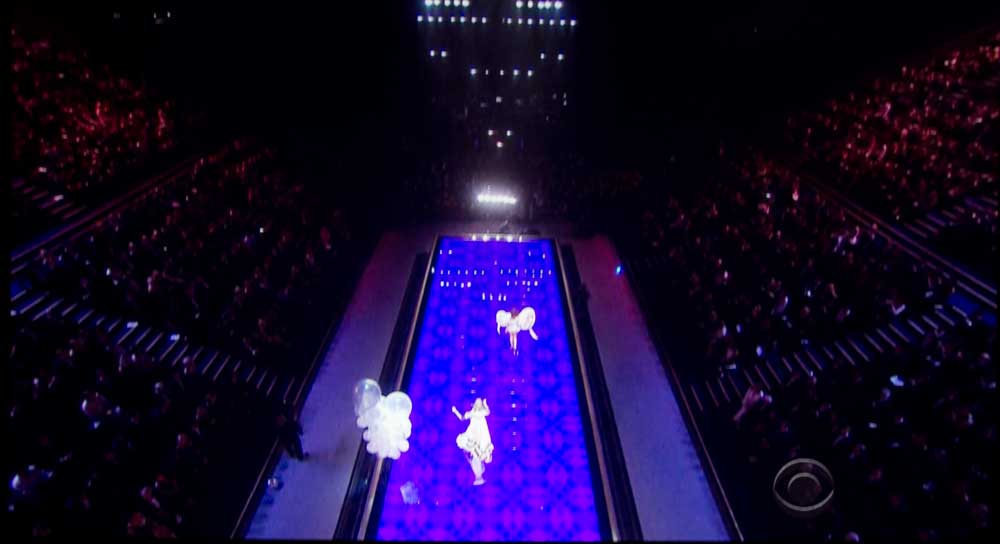Picture Quality - Overview - Right Out of the Box
Our regular readers know that we calibrate most projectors that sell for over $1000 before we review them, but rarely calibrate a projector under $1000. From a practical standpoint, we do realize that most people spending $700 or even $1500 for a projector aren't going to hire someone and shell out $300 - $600 for a calibration of their projector.
In the case of the Epson Home Cinema 2040, we have passed on calibrating it. The good news is that color is rather impressive right out of the box. So, while in the vast majority of reviews on our site, photos of projected movie images, are taken using a freshly calibrated projector, these are "what you see is what you get," if you take it right out of the box and plug it in. (Note, in most reviews sports images are taken using a "bright" mode, so those are never fully calibrated, although do get some minor adjustments.)
Let's refocus on the Home Cinema 2040.
First of all, with all those white and color lumens available, this is a projector that produces some really good looking color while measuring over 1700 lumens. That's a huge amount - technically, in a fully darkened room that would let you have a nice 175" diagonal screen. That's roughly 7 feet high!
And there's almost another 30% more lumens if you need every last one, in the Epson's Dynamic mode. It's got the usual green shift typical of brightest modes in lamp based projectors, but nice to know those lumens are there, if you absolutely need them. It's not too heavily green, and you can dial it back a bit without losing many lumens.
This Epson only has four regular color modes - Dynamic, Bright Cinema, Natural, and Cinema. All of the photos here are in the less bright, but superior Cinema mode, except the football images which were taken in Bright Cinema. There isn't a noticeable difference between Bright Cinema and Cinema in measured brightness, but other aspects give "Bright" Cinema more pop, and make it the better choice when there's a lot of ambient light present.
In a fully darkened room, you'll probably be watching in Cinema with Eco mode for its lower brightness, and still be very nicely bright on a large screen. And in Eco, you get a fairly quiet projector by home "entertainment" standards, while doing your part to save the planet by using less electricity. That was certainly my experience.
Home Cinema 2040 Handling Skin Tones
Remember, all those images above were taken in a completely unadjusted Cinema mode - aka - "Right out of the Box."
Pretty Impressive! You can basically compare these images with those of many more expensive projectors that were first calibrated, and not be sure which is which, from a color standpoint.
Or let me put it another way: In the course of shooting all these images with a rather serious Canon 60D dSLR camera, there's always a slight amount of shift to colors. More come into play, when viewing on your computer screen or mine. Let's just say that the Home Cinema 2040 does a sufficiently fine job without adjustment, that it just might look better/more natural than some calibrated projectors, by you are looking at this image.
In other words, this is a projector where you can fully enjoy it's good color accuracy without having to be an enthusiast or hobbyist, or tweaker, or hire someone to calibrate it. If you never spent time adjusting your LCDTV, you'll love this projector for its color.
The last four images, of Daniel Craig as Bond, as usual are provided primarily as a reminder that the lighting makes a dramatic difference on skin tones. In this case you've got him in direct sunlight, night, fluorescent, and indirect daylight - with his face having very different color in each.
Black Level Performance and Dark Shadow Detail
Black level performance is the one area where all sub-$1000 projectors come up very short. You really have to move up to the $2000+ price range (or find some incredible deal - usually a refurbished projector) to find projectors with really good black level performance. Even once you go over $2000, not all projectors have really good performance in this area. Generally we refer to the better ones as ultra-high-contrast projectors. We don't go by the manufacturer's contrast claims - those are all over the place, but by eyeballing each projector and comparing how they perform on various dark scenes.
The images above: We start out with a grayscale version of the "Bond night train scene" from Casino Royale. First is the Home Cinema 2040, which is then followed by a number of competitors. Right after it is the recently reviewed Optoma HD37. Then comes one image - from the Epson 5030UB/6030UB - at over twice the price, to show you what really great black levels look like, and how all of the others pale by comparison. That's followed by the BenQ HT1075 and the Optoma HD141X.
Then comes a grayscale of Kitnis and Rue (from The Hunger Games), sleeping in a very dark image we like for looking at dark shadow detail. The first image is the Epson, followed by the Optoma HD161X / HD50, which is in the $1300 range. That's followed by a few generally dark images in color for your perusal.
The Home Cinema 2040 and 2045 are a bit better than the average at black levels, for 3LCD projectors in these low price ranges, but still not quite up to many of the single chip DLPs out there. The Epson's dynamic iris helps, but the lower native contrast is a starting disadvantage. Still, the Epson holds up well against some of those DLPs.
Let's talk practical. Put the HC2040 (or HC2045) in a near pitch black cave or home theater, and the difference between them and one of the better, but similarly priced DLP will definitely favor the DLP in terms of blacker blacks.
But, these Epsons are bright projectors. They are more likely to end up on a table in a living room, bedroom, den or in your backyard at night. That means its most likely that there will be some, maybe even a significant amount of ambient light present. That ambient light destroys contrast. A lamp with a relatively dim 25 watt incandescent light bulb will dramatically reduce the differences in black level performance of two projectors! Understand, that even with the ambient light present, the one that started with the advantage will still have an advantage, but it will become relatively minor.
You can buy a different projector with better blacks around this price point, but just remember, those black levels will still be "entry level." Once you decide that you are hooked on performance, and will eventually want to upgrade, know that whether you have a sub $1000 DLP or LCD projector, spending $2000 (or less in the future) will make a huge difference compared to either! In other words, the Epsons are just dandy as starter projectors even in this area!
That brings us to dark shadow detail. As is very common, projectors with less than great black levels often have excellent dark shadow detail. Count these Epson projectors as two that fit that description. What makes them so good, is that with their black levels so much brighter than say a great $2500 projector (with much blacker blacks), that means that not only are the blacks are much brighter on the HC2040, but that the near blacks will be slightly brighter still.
Those near blacks are going to be much brighter than if the projector was starting out much darker from it's better blacks. That may seem confusing, but the bottom line is that the Epson is excellent at revealing dark shadow detail!
We also use the Bond night train for analyzing dark shadow detail. Look to the shrubs behind the tracks on the far right. You can see tons of detail on the HC2040, in fact more than in any of those other projectors' train images. Definitely impressive!
Bottom line: Acceptable black level performance for the price, and great dark shadow detail - at any price point.


